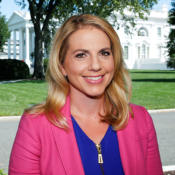After five years of negotiations, a dozen Pacific nations are poised to reach agreement on the largest trade pact in the world. The Trans-Pacific Partnership, or TPP, encompasses nations from the western Pacific Ocean all the way to the coast of South America. Importantly, it does not include the largest trading partner in the region: China. Nonetheless, the TPP would bring together 40 percent of the global economy under one set of rules for labor, tariffs and trade.
Read more about the TPP
ATLANTA ROUND
The Atlanta round of talks began Wednesday and was initially scheduled for two days, but as negotiators began to make significant progress, the meetings were extended repeatedly. Going into Sunday’s talks, the major sticking point was the intellectual property rights around genetically-engineered pharmaceuticals. The Americans reportedly wanted an eight-year monopoly for drugmakers. The Australians wanted five. The issue figures heavily into the cost of medications covered under national health plans, such as in Australia.
Australia’s Trade Minister, Andrew Robb told the Australian Broadcasting Corporation that Australia’s current arrangements “are completely adequate and any proposed changes are non-negotiable. This is a red line issue for us.”
Earlier in the week, Japan and the United States also haggled over rules of origin for autos and auto parts. Japan’s market has largely been closed off to U.S. vehicles. The agreement would lift many of those barriers, while at the same time, giving Japanese automakers more flexibility to source auto parts from outside the free trade zone.
New Zealand was set to be a clear winner in the talks.
Kiwi company, Fonterra, is the world’s largest dairy exporter and would have new markets in Canada, Mexico, Japan and the United States, under the TPP.
CAPITOL HILL VOTE
Once a deal is reached by negotiators, the agreement still requires an up or down vote by the U.S. Congress.
Many Democrats and labor groups worry about what the trade pact would mean for jobs in manufacturing and environmental protections.
While little is passing the American legislative body these days, a free trade agreement cobbles together a broader coalition of Democrats and Republicans.
When, Senator Mitch McConnell took over as majority leader in the U.S. Senate, free trade was a rare brightspot in his relationship with the White House.
ASIA PIVOT
The TPP has figured heavily into the Obama administration’s so-called, “Asia pivot” strategy.
As recently as last week, U.S. President Barack Obama pitched the global body at the United Nations on its virtues, saying, “We can promote growth through trade that meets a higher standard. And that’s what we’re doing through the Trans-Pacific Partnership — a trade agreement that encompasses nearly 40 percent of the global economy; an agreement that will open markets, while protecting the rights of workers and protecting the environment that enables development to be sustained.”
Compiled with reporting from Reuters, the ABC (Australian Broadcasting Corporation)
 CGTN America
CGTN America

